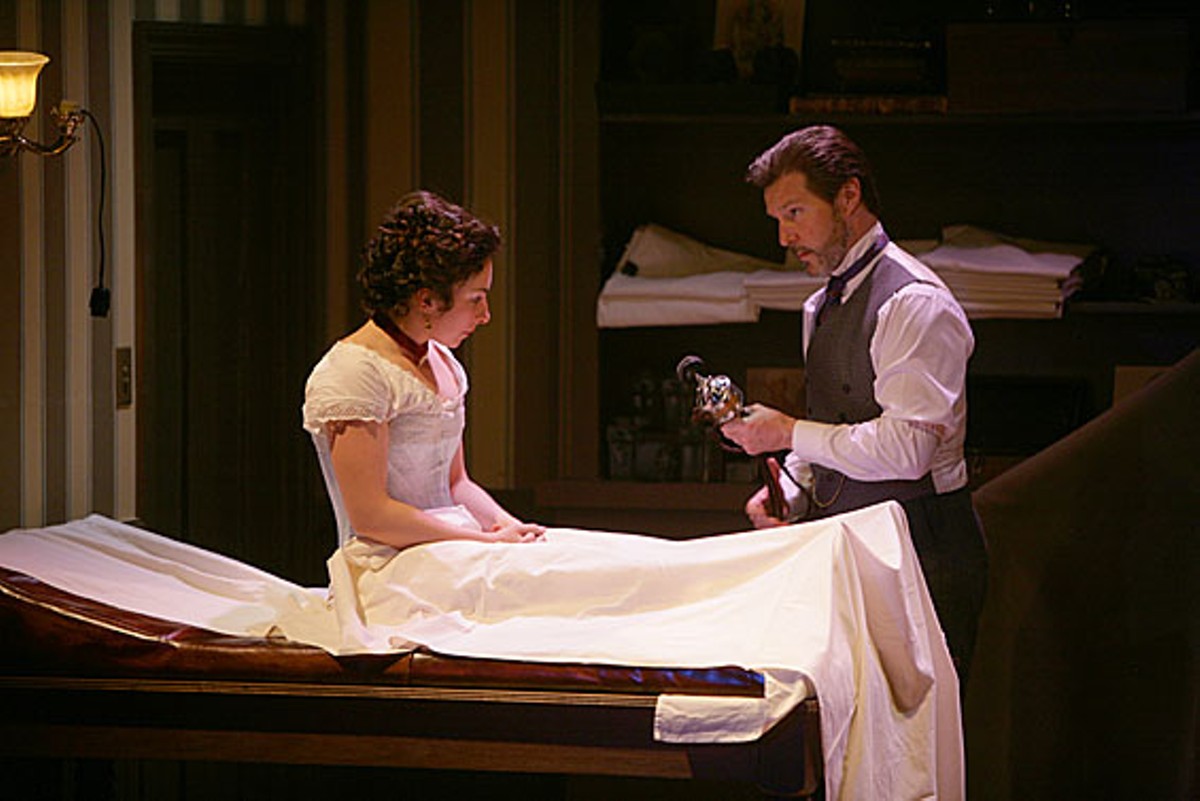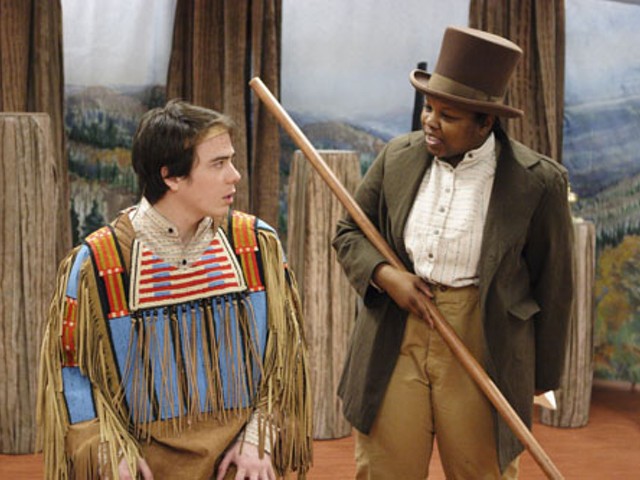It is the 1880s. Electricity has been harnessed and science is on the move. In upstate New York, a society doctor specializes in curing women of hysteria. "The congestion in your womb is causing your hysterical symptoms," Dr. Givings officiously explains to his wary patient, Mrs. Daldry. Fortunately, the good doctor has at hand a revolutionary invention, an electric vibrator that will hit the spot, restoring bloom to a woman's cheeks. And indeed, the dispirited Mrs. Daldry responds rapturously to this mysterious new treatment.
But here's the rub. The doctor's office is in his home; the private examination room connects to the front parlor. Dr. Givings' overly protected wife overhears so much ecstatic moaning from the next room that she sets out to procure some bloom for herself. Imagine Nora from Ibsen's A Doll's House trying to navigate her way through a Feydeau farce, and you get a sense of the deliriously original pleasures to be had from Sarah Ruhl's In the Next Room or the vibrator play, the final offering in this season's Repertory Theatre of St. Louis Studio series.
Ruhl's fanciful scripts always elude easy categorization. Because there are no boundaries to her plays, they force us to rethink the limits of our imaginations. In the Next Room (which might have been titled Love and Electricity) also compels us to redefine our standards of decorum. When Dr. Givings places a vibrator discreetly under a sheet and brings Mrs. Daldry to orgasm, the patient might not understand what's happening to her, but the viewer does. Yet Ruhl's artistic delicacy allows her to probe indiscreet situations. There is nothing explicit or gratuitous here. Much of the play's effect relies on metaphor. The unused parlor piano ("the poor thing is languishing without a human touch") represents Mrs. Givings, ignored by her husband. The extensive buttons on the women's undergarments remind us of their buttoned-up lives.
Since its premiere in 2009, In the Next Room often has been described as a story about the empowerment of women, so the biggest surprise about this Rep production (directed by the ever-inventive Stuart Carden, who excels with offbeat material) is the commanding presence of Ron Bohmer as the emotionless Dr. G. Bohmer skillfully infuses history's first Dr. Feelgood with an appealing drive. He personifies the proverb, "Physician, heal thyself."
Dr. Givings describes his assistant Annie as "the soul of tact and reserve." Amy Landon subtly emphasizes the soul first. It's always lovely when an actor who speaks so little can say so much, and Landon does. Emily Dorsch portrays Mrs. Daldry with an impeccable timing that is admirably invisible. Krystel Lucas finds the confused grace in a black housekeeper who is called into service as a wet nurse to feed the Givings' milk-starved baby. David Christopher Wells vitalizes Act Two as a bohemian painter wildly out of place in proper society. Alas, Annie Purcell is miscast in the key role of Mrs. Givings. A character that needs to be played by a woodwind instrument instead is being trumpeted with brass.
Here's another questionable choice from the usually impeccable Carden. Why, when the script clearly calls for a doorbell, do we get a buzzer that sounds like something left over from Beat the Clock? But the biggest problem is beyond solving: Act Two is simply too long. The momentum that is so delightfully established in Act One cannot be sustained, so the play ends on a muted note of vague disappointment.
But despite its application of the age-old adage that there can indeed be too much of a good thing, In the Next Room delivers a rare evening of theater. Dorothy Marshall Englis has designed layer upon layer of evocative, character-illuminating clothes, and Gianni Downs' detailed scenic design miraculously makes the Rep studio seem spacious. I was especially charmed by the incongruous bust of an elephant perched on the floor of the Givings' parlor. Perhaps this little Babar is the production's talisman: He sits on his haunches with an expression of such giddiness, you might imagine that he too had recently been in the next room, experimenting with this curious new invention when the doctor wasn't looking.






